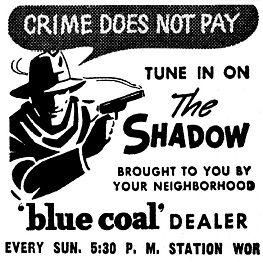
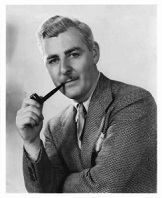 Who knows what evil lurks in the hearts of men? The Shadow knows!
Who knows what evil lurks in the hearts of men? The Shadow knows!
This week’s old time radio episode is a milestone, for it is our 500th individual post–not our 500th episode but the 500th separate post–for there have been a number of instances over the past ten years where we have run more than one episode as a single offering. We have run several two-parters as a single feature (the very first episode on June 16, 2009 was SF author George R. Stewart’s classic novel Earth Abides and was a two-parter, for instance), and there have been a handful of the classic 1930s Tarzan serials where we have strung 3 or 4 consecutive 12-minute episodes together as a single weekly feature, and there have been other instances with other shows. That said, with this week’s landmark 500th post I felt it would be appropriate to run an episode of The Shadow, one of the most fondly remembered (not to mention iconic) shows to have existed during the classic years of the Golden Age of Radio. I hope you enjoy it.
The Shadow (1937-1954) aired “The Hoodoo Ship” on October 19, 1941 as its 228th episode out of approximately 690. Though only about 275 are known to still exist, the number is subject to change as new episodes are unearthed from time to time. This is the first episode we have featured since July of last year, and I felt it was high time we offered another, for The Shadow has proven quite popular with Golden Age radio fans, and especially fans of the Shadow in both radio and magazine formats.
As we have done previously, the following is an abridged account of the character’s radio and magazine history for those coming to The Shadow for the first time. Long-time listeners may have forgotten some of the details, so if you are among them, refresh your memories or take a moment to grab your favorite beverage of choice before listening to this episode. We’ll wait.
The history of the Shadow character is long and storied. A bare bones synopsis begins on July 3, 1930 when the narrator of magazine publisher Street & Smith’s radio version of its pulp magazine, Detective Story Magazine, was given the name of The Shadow. This mysterious voice who merely introduced and narrated the radio show, but was not a character in any of the episodes, became so popular after it was taken over by Frank Readick, Jr. and his spooky, phantom laugh that on April 1, 1931 The Shadow magazine was born. It ran for 325 issues, 282 of them written by Walter B. Gibson (1897-1985) under the house name of Maxwell Grant.
 The Shadow debuted on radio on September 26, 1937 and delighted fans for more than seventeen years, closing shop on December 26, 1954. The radio show began its long run on the Mutual Broadcasting Network on Sunday evenings and was sponsored by Blue Coal. From its inception until just past its first year (Sept., 1937-Oct., 1938) the voice of the young 22-year-old Orson Welles (1915-1985) would be heard as that of the Shadow, and Agnes Moorehead (1900-1974, photo at left) would play the role of “the lovely Margot Lane,” his “faithful companion” and aide. Following Welles’s departure Bill Johnstone became the Shadow. Johnstone (1908-1996, photo top right) was then succeeded by Bret Morrison (1912-1978), who, in two stints (1943-44 & 1945-54), was radio’s the Shadow for ten of its seventeen years (though others besides these three mainstays would ascend to the role). Moorehead would also exit the show (in 1940) to follow Welles after he formed his Mercury Theater on the Air, as well as appear in several of the young genius’s classic films.
The Shadow debuted on radio on September 26, 1937 and delighted fans for more than seventeen years, closing shop on December 26, 1954. The radio show began its long run on the Mutual Broadcasting Network on Sunday evenings and was sponsored by Blue Coal. From its inception until just past its first year (Sept., 1937-Oct., 1938) the voice of the young 22-year-old Orson Welles (1915-1985) would be heard as that of the Shadow, and Agnes Moorehead (1900-1974, photo at left) would play the role of “the lovely Margot Lane,” his “faithful companion” and aide. Following Welles’s departure Bill Johnstone became the Shadow. Johnstone (1908-1996, photo top right) was then succeeded by Bret Morrison (1912-1978), who, in two stints (1943-44 & 1945-54), was radio’s the Shadow for ten of its seventeen years (though others besides these three mainstays would ascend to the role). Moorehead would also exit the show (in 1940) to follow Welles after he formed his Mercury Theater on the Air, as well as appear in several of the young genius’s classic films.
To arrest possible confusion arising from seeming inconsistencies between the print and radio versions of The Shadow it is important to note the following differences (though there are others):
The original print version of the Shadow portrayed him without any powers at all; he was a shadowy figure of the darkness, a cunning sleuth dedicated to overthrowing evil wherever he found it. It wasn’t until the radio version came along that he was imbued “with the power to cloud men’s minds” from a secret he learned in the Orient.
In The Shadow novels, Miss Lane’s first name was spelled Margo; for radio it was Margot.
In The Shadow novels, Margo Lane was not aware of the Shadow’s secret identity; for the radio scripts she was the only one who did know his secret identity.
In the magazine, the Shadow’s primary alter-ego was (eventually) revealed as that of Kent Allard; his radio alter-ego was Lamont Cranston.
“The Hoodoo Ship” begins in 1850 with the backstory of The Raven, an illegal slave ship (the slave trade had been banned in the United States by an act of Congress in 1807) on its way across the Atlantic on the long voyage from Africa to America. Packed with slaves, it decides to throw its entire illegal human “cargo” overboard to their deaths when a warship out for plunder has been trailing The Raven, waiting for the right moment to overtake and claim its treasures. The story then moves to the present and to the owner of the refurbished Raven, a friend of Lamont Cranston’s. Though the new owner and captain dismisses the notion, it is believed by many–including some of the crew–that the ship is haunted, for every previous captain has ended up dead. Taking the ship out for a cruise with Lamont and Margot, the truth of the alleged haunting is put to the test when the captain is found dead of no apparent cause at first glance. Enter the Shadow to figure out if the curse was indeed real, and if not who done it, why, and with the final but most interesting puzzle to be solved that of just how. Have fun trying to solve the mystery in this rather unusual Shadow adventure.
The weed of crime bears bitter fruit. Crime does not pay. –The Shadow
Play Time: 29:43
{In the middle of October 1941, the neighborhood gang was looking forward to Halloween, but after listening to this episode of The Shadow was temporarily influenced to head to the corner newsstand and pick up some dark tales of criminals and their cowardly crimes. The Shadow (1931-49) was in its heyday in the months prior to World War II, and its stories hadn’t begun to reflect America’s future enemies. It was a bi-weekly in 1941, with issues on the 1st and 15th of the month, a hectic schedule it would maintain from 1932-43, at which time it would become a mere monthly. The Phantom Detective (1933-53) was often a sure choice with its mysterious masked detective a certain hook to get junior crimefighters to fork over their hard-earned dimes. It was a monthly in 1941. Thrilling Detective (1931-53) pulled no punches with its hard-hitting, page-turning stories full of dastardly deeds, death, and dames, which obviously was a winning formula for it had one of the longest runs of any detective/crime magazine, with its 22-year lifespan seeing a respectable 213 published issues . It too was a monthly in 1941. To place these numbers in perspective, it should be noted that Street & Smith’s Detective Story Magazine was the first pulp magazine devoted entirely to detective fiction. It ran for 34 years, from 1915 to 1949, was for 20 years (1915-35) mostly a weekly magazine, and ended up publishing an astonishing 1,050+ issues.]
[Left: The Shadow, Oct. 15, 1941 – Center: The Phantom Detective, Oct. 1941 – Right: Thrilling Detective, Oct. 1941]
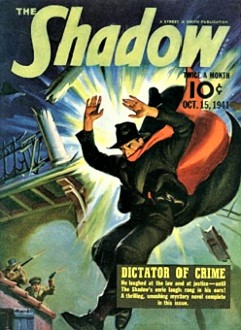
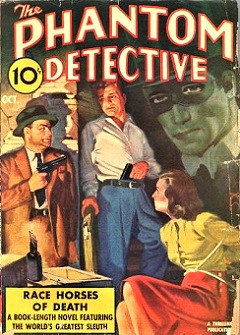
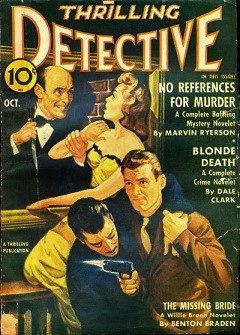
To view the entire list of weekly Old Time Radio episodes at Tangent Online, click here.